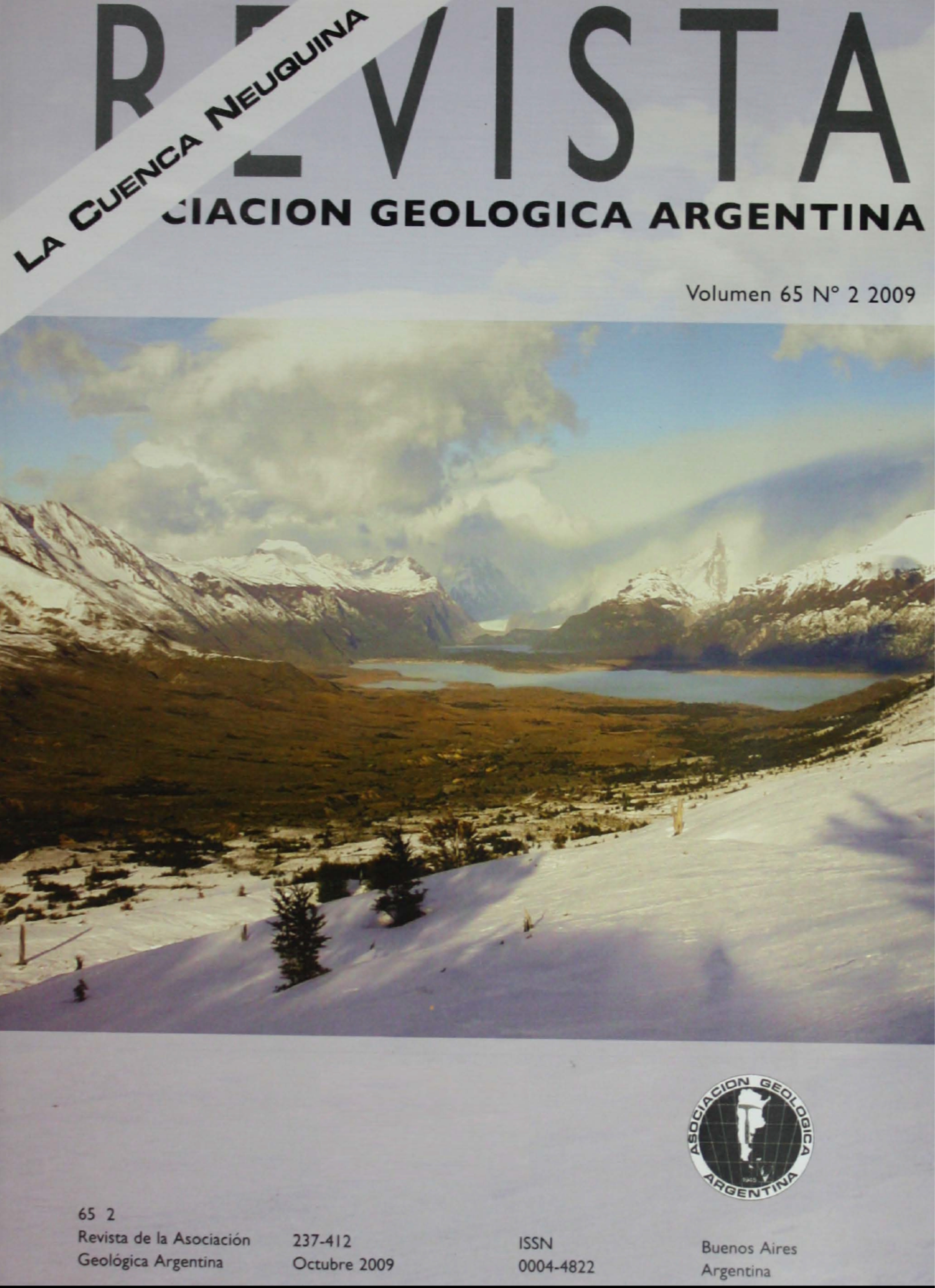The synrift of theHuincul High, Neuquén Basin: Evolution and control on the stratigraphy andstructure of the area
Main Article Content
Abstract
The Huincul High constitutes an outstanding E-Wmorpho-structural feature that splits the Neuquén Basin into two, it spans formore than 250 km from the Andean orogenic front, eastwards to the General Rocaarea. It is composed by a trend of E-W oriented, strongly asymmetric and southverging anticlines with a vertical throw exceeding 1.5 km. The evolution of theHuincul High began with the development of a series of NW orientedhalf-grabens, typically with the downthrown block to the north; this tendencyshifts in the eastern end to more WNW-ENE oriented half grabens. They arenormally 10 to 20 km long in strike direction with a 1.5 to 5 km thick infillof Upper Triassic to Lower Toarcian deposits. The morphology previous to thefirst marine transgressions during Early Jurassic times was of a series ofhalf-grabens whose relief had been partly leveled by the volcanic and clasticdeposits of the Precuyano; besides prominent basement highs and volcanicedifices controlled the distribution of the Jurassic marine sediments. Theinfluence of the rift subsidence is well documented until Early Toarcian times;afterwards the area went through a period of relative tectonic quiescenceaccompanied by the progradation of the depositional systems from the southregardless of the underlying structural features. The development of acompressive system spanning from the Upper Jurassic to the Upper Cretaceousgave the Huincul High its present day configuration.
Article Details

This work is licensed under a Creative Commons Attribution-NonCommercial 4.0 International License.
Nota de copyright
Los autores conservan los derechos de autor y garantizan a la revista el derecho de ser la primera publicación del trabajo licenciado según una licencia de atribución Creative Commons que permite a otros compartir el trabajo con el reconocimiento de la autoría y de la publicación en la que se publicó por primera vez.
Declaración de privacidad
Los nombres y direcciones de correo electrónico introducidos en esta revista se usarán exclusivamente para los fines declarados por esta revista y no estarán disponibles para ningún otro propósito u otra persona.

